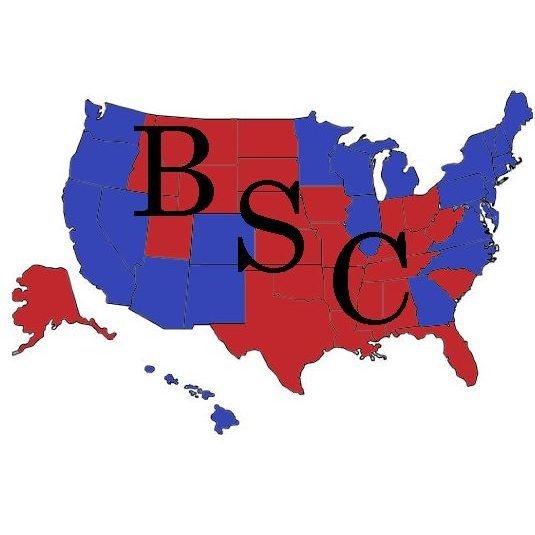Perhaps We Should Give the Constitution a Try
The Federal Government is clearly out of control. As of the end of 2016, 89,000 federal rules (laws and regulations) were on the books. Each and every one of which comes with a cost to society which ultimately must be borne by the private sector. As if this weren’t enough of a burden, as of October of 2020, the United States had accrued over 27 trillion dollars in debt. Congress tosses around trillion-dollar spending bills like they’re party favors. When new spending is discussed (such as the COVID-19 relief bill) the argument is always, “are we spending enough?” It’s never, “are we spending too much?”
Conservative groups such as the Tea Party have tried to affect change electorally for years. They have sponsored small-government candidates to run against both Democrats and establishment Republicans. Unfortunately, even with substantial success in electing small-government representatives and senators, growth of government influence has not appreciably slowed. We’ve done some remodeling on the Titanic. We’ve even managed to seize the helm from time to time. But it’s still a fast-moving behemoth destined for a reconning with an iceberg. Changing personnel has not righted the FBI. We were naïve to assume it would work any better in Congress. The past 12 years have surely taught us that the Federal Government will not correct itself.
Sun Tzu said, “Tactics without strategy is the noise before defeat.” Tactically we’ve become fairly successful at electing conservative politicians. But has this all just been the “noise before defeat”? Electing the right people is all well and good. But hope is not a strategy. Hoping that our politicians would fix government was never a winning bet.
Perhaps it’s time to try something other than electoral politics. Maybe it’s time to try a constitutional strategy to reign in government. The first clause of Article V of the Constitution describes how Congress may initiate an amendment. However, the seldom discussed second clause empowers the states to initiate the amendment process by calling a convention of states. Via this instrument, the states may circumvent a recalcitrant Congress to implement constitutional constraints on the Federal Government. While the second clause has never been used, it remains a valid method to amend the Constitution.
It’s important to note that an Article V convention is not a constitutional convention – a forum in which the Constitution may be rewritten. It is a convention of states – a forum in which amendments may be proposed without congressional involvement. The process is actually quite straightforward.
- When 2/3 of the state legislatures (34 in our case) pass resolutions calling for the same focus areas, an application is made to Congress. All state resolutions must be in agreement. If one state asks for an amendment about fiscal restraint and another an amendment about the electoral college, they are not counted together towards the 2/3 requirement.
- Upon receipt of the application, Congress sets a time and place for the convention of states. Congress cannot decline, and it has no further involvement in the convention.
- Each state will name a delegation to the convention. The method of selection and the number of delegates is up to each state. However, regardless of its size, each delegation gets only one vote. Small states have equal footing with large states.
- The delegations will draft proposed amendments for the topic areas covered in the state resolutions. They are not empowered to exceed the state resolutions. If the states passed resolutions for term limits, the delegates cannot add a proposal for gun control.
- The delegations will vote on the proposed amendments, with each state having one vote.
- Those proposals approved by the convention of states will be sent to the individual states for ratification.
- Any proposal that garners ratification by ¾ of the states becomes an amendment to the Constitution.
As one might imagine, large states, big-government politicians, and left leaning advocacy groups are vehemently opposed to an Article V convention of states. In fact, the Soros backed Common Cause policy group has assembled a coalition of over 200 left leaning groups to lobby against such a convention. They are so frightened by a convention that they have embarked on a massive disinformation campaign. They are promoting the notion that a convention of states will morph into a runaway constitutional convention – resulting in jeopardy to our civil liberties — and perhaps even destroying programs such as Medicare and Social Security. However, pay attention to their “tell.” They’re afraid of it, because it may actually work.
Prof. Robert Natelson, a Senior Fellow in Constitutional Jurisprudence, has written numerous works on the Constitution, including the book the Law of Article V. In his book he cites numerous historical documents and court decisions to dispel the “runaway convention” fears that Common Cause is promoting. Prof. Natelson describes numerous safeguards that will prevent a runaway convention – most of which are based on the fact that the states, not Congress, remain in control throughout the process.
An Article V convention seems like a difficult method to reign in government – and it is. However, 15 states have already passed resolutions to call a convention of states to address:
- Fiscal responsibility
- Government overreach
- Term limits
17 additional states are currently working on resolutions for these same topics. Clearly the states have had enough, and are ready to show the Federal Government who works for whom.
Convention of states opponents often claim that Justice Scalia was opposed to such a convention. He was not. In the quote that opponents often cite, he was opposed to a rewrite of the Constitution – just as all conservatives are. However, on the subject of an Article V convention of states he said:
I do not have a lack of trust in the American people. I am the one here who is least terrified of a convention. The one remedy specifically provided for in the Constitution is the amendment process that bypasses Congress. I would like to see that amendment process used just once. I do not much care what it is used for the first time, but using it once will exert an enormous influence on both the Congress and the Supreme Court.
It’s clear that a convention of states scares the left. So, let me ask this – If Soros backed groups are against it, and Justice Scalia was for it, what else do conservatives need to get behind it?
John Green is a political refugee from Minnesota, now residing in Star Idaho. He is a retired engineer with over 40 years of experience in the areas of product development, quality assurance, organizational development, and corporate strategic planning. He can be reached at greenjeg@gmail.com.
Content syndicated from TheBlueStateConservative.com with permission.






There are a number of factual errors in this OpEd but I agree the Article V Convention is the way to formally discuss our collective situation at this point in history.